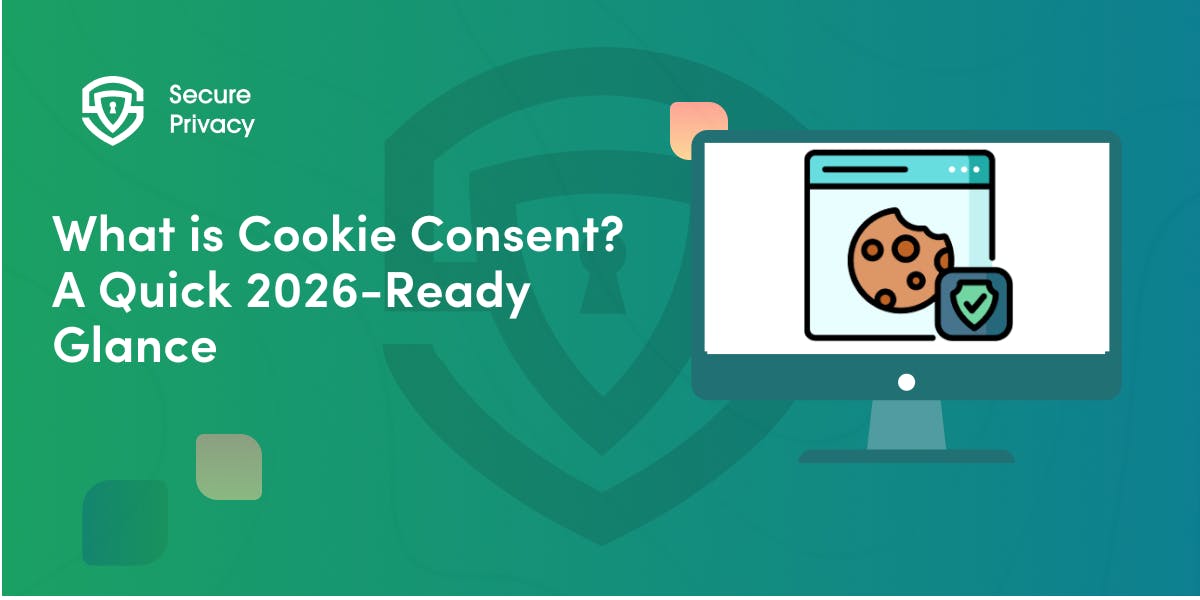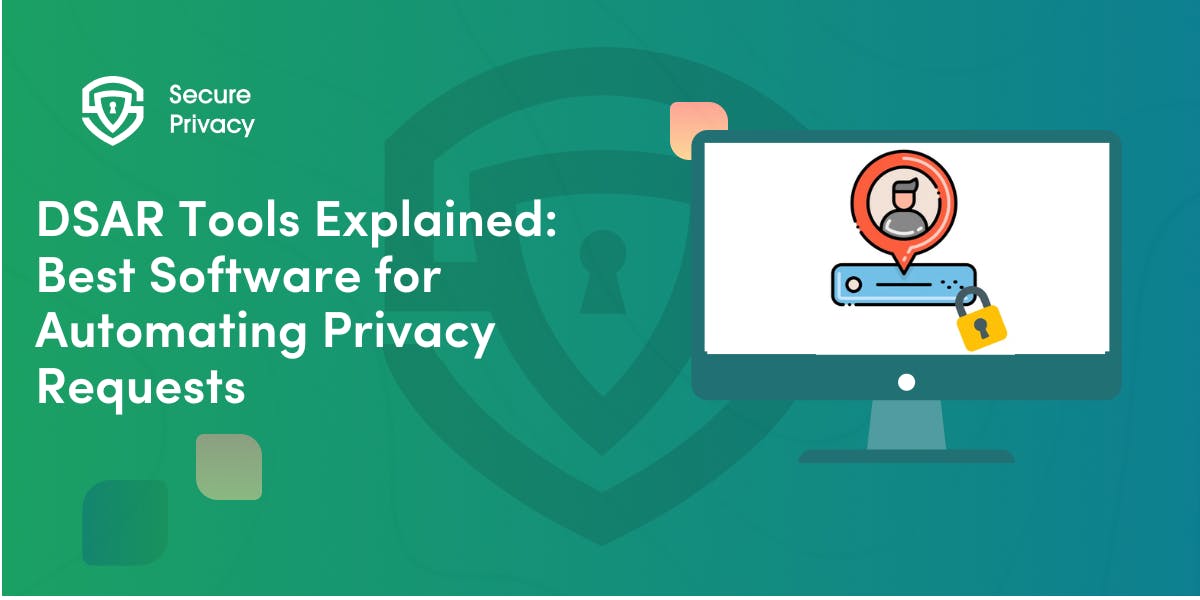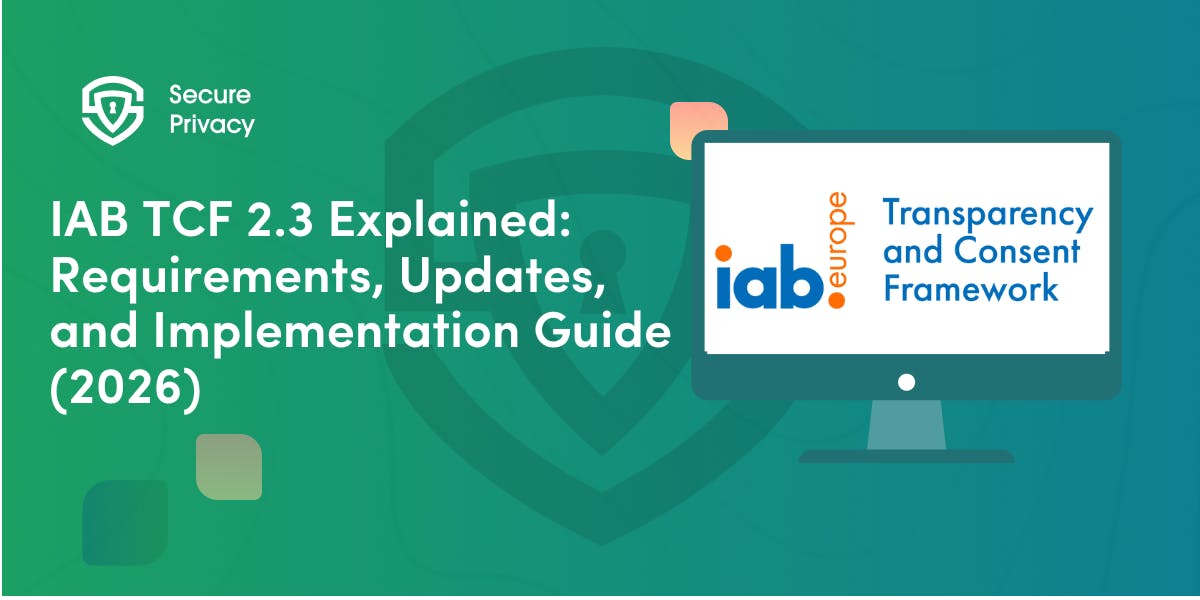Benefits of Third-Party Vendor Risk Management Services
Protect your business from vendor risks! Learn how Third-Party Vendor Risk Management (TPRM) services help ensure compliance, prevent data breaches, and safeguard operations.
Your company increasingly relies on third-party vendors to deliver critical services, from IT support to cloud storage and payment processing.
Now onto a little-known fact: you are liable for the compliance of your third-party providers, a.k.a. data processors. You will bear responsibility if they process your users' personal data in violation of the GDPR or other data protection laws.
This accountability framework is similar to India's DPDP Act, where organizations must ensure processor compliance.
This is why this reliance introduces a significant challenge: ensuring that vendors comply with data protection laws and maintain robust security measures.
Risks of vendors not following the law are real. For example, some companies have been fined under the General Data Protection Regulation (GDPR) for not making sure their vendors followed the law. Under GDPR, data controllers (companies that collect and manage personal data) are responsible for everything their data processors do. This is why it's important to have a thorough and effective third-party vendor risk management program.
Neglecting vendor compliance exposes businesses not only to fines and penalties, but also to reputational damage and operational disruptions. Therefore, understanding third-party vendor risk management services is crucial for organizations seeking to safeguard their operations, customers, and compliance status.
That’s where third-party vendor risk assessment management services can help.
What Are Third-Party Vendor Risk Management Services?
Third-party vendor risk management (TPRM) services help businesses manage risks that come from working with vendors, suppliers, or service providers. These services ensure that vendors meet required standards for security, data protection, and regulatory compliance.
Simply put, they check out your data processors to ensure that they won’t get you in trouble with the law.
Key activities of these services include:
- Vendor Onboarding. Before partnering with a vendor, it is important to verify their reliability, financial stability, and compliance with laws.
- Risk Assessment. The process involves identifying potential risks, such as data breaches or legal violations, and prioritizing vendors based on their respective risk levels.
- Ongoing Monitoring. We regularly review vendor performance to ensure they adhere to agreed standards.
- Strong Contracts.: Setting clear rules in contracts to protect the business in case of issues, including clauses for data protection and service expectations.
TPRM services often use tools to make these tasks faster and more efficient. They help businesses stay ahead of potential problems, avoid fines, and protect their operations from risks caused by third parties.
Why Third-Party Vendor Risk Management Matters
These days every single business relies on third-party services for critical operations like IT services, cloud storage, or payment processing, and the risks tied to these partnerships grow significantly. Given that these third-party services bear the responsibility for their portion of the work, it becomes evident that managing these risks is essential.
Third-party vendors frequently manage sensitive data or possess access to crucial systems, thereby posing a potential vulnerability in a company's security framework. A single vendor’s failure to protect data or follow regulations can lead to devastating consequences for the business, including data breaches, financial loss, reputational damage, and legal penalties.
How TPRM Helps Businesses
Involving a third party to manage your third parties may provide significant benefits, such as:
- Proactively identifying and addressing vulnerabilities introduced by vendors.
- Keeping businesses in line with data protection and regulatory requirements.
- Showing customers, investors, and partners that the business takes security and compliance seriously.
- Reduces the likelihood of costly incidents like data breaches, fines, or operational disruptions.
Most importantly, these service providers know their craft and can easily spot the risks and mitigate them. Their sole focus is on identifying and mitigating risks.
They will cost some money initially, but they save lots of money in the long run. Aside from saving you from penalties and reputation damage, they will bring the expertise they’ve built from serving other clients like you and implement measures based on the lessons from those projects.
Components of an Effective Third-Party Vendor Risk Management Program
Building an effective third-party vendor risk management (TPRM) program requires a structured approach that spans the entire lifecycle of vendor relationships. From onboarding to ongoing monitoring and incident response, each step plays a critical role in minimizing risks and maintaining compliance.
It usually contains the following components:
Due Diligence. The process begins with vendor onboarding and assessment, where businesses carefully evaluate potential partners before formalizing the relationship. Due diligence involves reviewing the vendor’s financial stability, reputation, and compliance history to ensure they align with the company’s standards.
Additionally, assessing the specific risks the vendor may introduce helps businesses identify high-risk partnerships from the outset.
Once identified, we must categorize and prioritize the risks. Not all vendors pose the same level of threat; for instance, a cloud storage provider handling sensitive data requires stricter oversight than a routine office supply vendor.
Contract Management. Agreements should clearly define each party’s responsibilities, particularly in areas like data protection, service performance, and compliance. Robust data protection clauses, service level agreements, and termination rights guarantee the business's protection in the event of issues.
Ongoing Monitoring of Vendors. Signing a contract doesn't end risk management. Ongoing monitoring is essential to maintain oversight of vendor performance and compliance. This can involve periodic audits to verify adherence to agreed standards, as well as continuous monitoring to detect changes in the vendor’s operations or emerging risks. Using tools to track vendor activity in real time allows businesses to address potential issues proactively.
Incident Response Planning. Despite the best preventive measures and the comprehensive due diligence process, incidents can still occur. This is why businesses should have well-defined protocols for addressing situations like data breaches or service disruptions caused by vendors. We also need to have clear communication plans to promptly and appropriately inform stakeholders and regulators.
Personnel Training. Finally, an effective TPRM program requires ongoing training and awareness. We must educate employees on the significance of managing vendor risks and how to identify potential issues. Fostering collaboration with vendors can help address gaps in their practices and ensure they meet the business’s standards.
Common Challenges in Implementing Third-Party Vendor Risk Management
Implementing a robust third-party vendor risk management (TPRM) program is rarely smooth. Businesses must address various challenges that come with implementing a robust third-party vendor risk management (TPRM) program.
- Limited resources—small and medium-sized businesses often lack the budget, tools, or personnel to manage vendor risks effectively.
- Complex vendor relationships—managing numerous vendors with varying risk levels across multiple industries or geographies can quickly become overwhelming.
- Evolving threat landscape—cybersecurity risks and regulatory requirements change frequently, requiring constant updates to vendor assessments.
- Vendor resistance—vendors may hesitate to share sensitive information during evaluations, complicating the risk assessment process.
- Internal misalignment—lack of collaboration between legal, IT, and procurement teams can lead to inefficiencies and delays.
Expect to face some or all of these. If you work already in data protection, you know how challenging it is to align all the stakeholders. This program won’t be an exception.
How to Choose the Right Third-Party Vendor Risk Management Service Provider
Selecting the right third-party vendor risk management (TPRM) service provider is an important decision that can significantly impact your organization’s ability to manage vendor risks effectively. The right provider should offer the expertise, tools, and support needed to address your unique challenges and regulatory requirements.
Here’s what you need to look for when selecting your provider:
- Industry Expertise and Experience
Look for a provider with a proven track record in your industry. They should understand the specific risks, regulations, and best practices relevant to your sector, whether it’s healthcare, finance, or technology. - Regulatory Knowledge
The provider must have deep knowledge of data protection laws like GDPR, CCPA, or Indian or Saudi law to ensure their solutions align with these regulations. This includes offering contract templates, audit tools, and guidance tailored to compliance needs. - Technology and Tools
Evaluate the technology they offer: - Automated risk assessments.
- Vendor monitoring platforms.
- Real-time reporting and analytics. These features streamline TPRM processes and provide actionable insights.
Is this technology actually helping you? That’s something you need to discuss with them.
- Scalability
Ensure the provider can scale with your business. Their services should accommodate growth, whether you’re adding more vendors or entering new markets. - Support and Training
A strong provider offers ongoing support and training. This includes educating your team on risk management practices and providing assistance during audits or regulatory inquiries.
Some questions you may want to ask them:
- How do you approach vendor risk assessment and categorization?
- What tools do you provide for monitoring and reporting?
- Can you help ensure compliance with regulations like GDPR or CCPA?
- How do you handle updates to risk profiles or regulatory changes?
- Do you offer scalability and customization to meet our specific needs?
Choosing the right TPRM service provider requires a careful evaluation of their offerings against your organization’s needs. Request case studies, client references, and demonstrations to understand how they operate in practice. By selecting a provider that aligns with your goals, you can build a robust TPRM program that enhances security, compliance, and efficiency.
Final Thoughts
Third-party vendor risk management is no longer optional in today’s interconnected and highly regulated business environment. Vendors can introduce significant risks, including data breaches, regulatory penalties, and operational disruptions. At the same time, laws like GDPR hold businesses accountable for their vendors’ actions, making a robust TPRM program essential for compliance and business continuity.
A proactive approach to vendor risk management protects not only your organization’s compliance status but also its reputation and long-term success. Now is the time for businesses to evaluate their vendor risk management strategies and strengthen them to meet the challenges of an increasingly interconnected world.
Get Started For Free with the
#1 Cookie Consent Platform.
No credit card required

What is Cookie Consent? A Quick 2026-Ready Glance
Your website loads. Cookies track users. But without proper cookie consent, you're violating GDPR — risking fines up to €20 million or 4% of global revenue. Cookie consent is the legally required mechanism by which websites obtain explicit user approval before deploying non-essential tracking technologies. This requirement stems from GDPR Article 4(11) and the ePrivacy Directive, mandating that consent must be freely given, specific, informed, and unambiguous.
- Legal & News

DSAR Tools Explained: Best Software for Automating Privacy Requests
You're drowning in data subject access requests. Manual searches through dozens of systems miss regulatory deadlines and expose organizations to fines starting at $2,500 per violation. The solution? DSAR tools — purpose-built software that automates the entire process of responding to data subject access requests, from intake to delivery.
- Legal & News

IAB TCF 2.3 Explained: Requirements, Updates, and Implementation Guide (2026)
Your ad revenue dropped 40% overnight. Google stopped bidding on your inventory. Your DSP partners flagged your traffic as non-compliant. The culprit? An outdated TCF 2.2 consent string after the February 2026 enforcement deadline.
- Legal & News
- Cookie Consent

